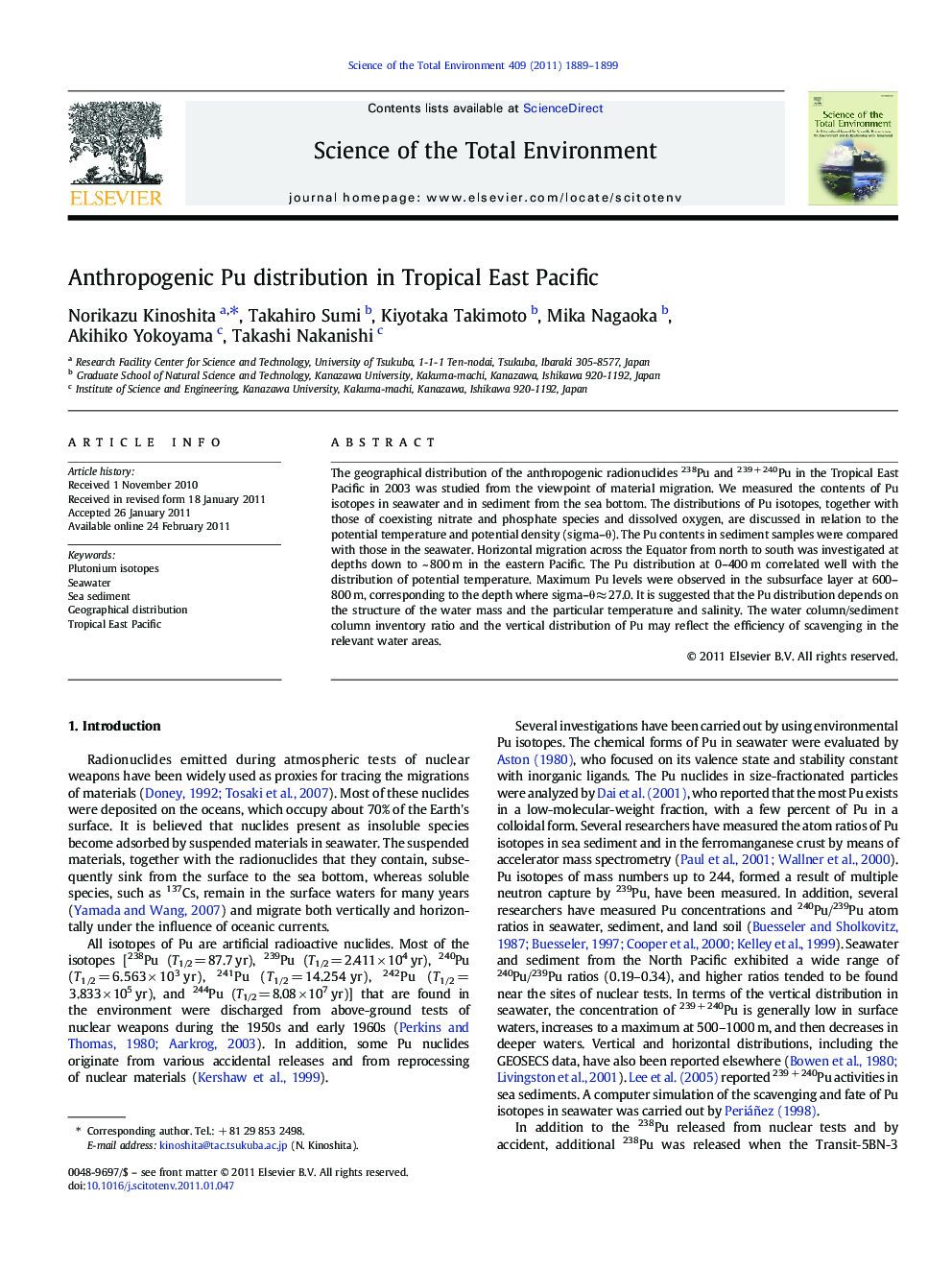| Article ID | Journal | Published Year | Pages | File Type |
|---|---|---|---|---|
| 4430226 | Science of The Total Environment | 2011 | 11 Pages |
The geographical distribution of the anthropogenic radionuclides 238Pu and 239 + 240Pu in the Tropical East Pacific in 2003 was studied from the viewpoint of material migration. We measured the contents of Pu isotopes in seawater and in sediment from the sea bottom. The distributions of Pu isotopes, together with those of coexisting nitrate and phosphate species and dissolved oxygen, are discussed in relation to the potential temperature and potential density (sigma–θ). The Pu contents in sediment samples were compared with those in the seawater. Horizontal migration across the Equator from north to south was investigated at depths down to ~ 800 m in the eastern Pacific. The Pu distribution at 0–400 m correlated well with the distribution of potential temperature. Maximum Pu levels were observed in the subsurface layer at 600–800 m, corresponding to the depth where sigma–θ ≈ 27.0. It is suggested that the Pu distribution depends on the structure of the water mass and the particular temperature and salinity. The water column/sediment column inventory ratio and the vertical distribution of Pu may reflect the efficiency of scavenging in the relevant water areas.
Graphical AbstractFigure optionsDownload full-size imageDownload as PowerPoint slideResearch Highlights► Geographical distributions of Pu isotopes were investigated from viewpoint of material migration. ► Horizontal migration from north to south was found at depths down to ~800 m in the eastern Pacific. ► Pu distribution at 0–400 m was correlated with water temperature. ► The distribution at 600–800 m correlated with water mass structure. ► Pu in seawater and sediment gave information about efficiency of scavenging.
